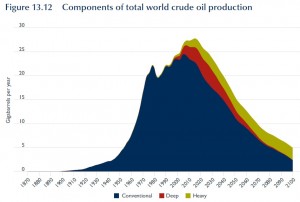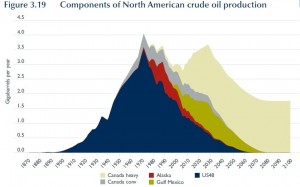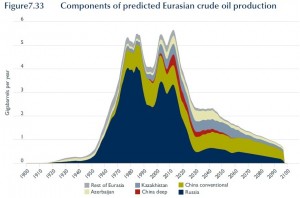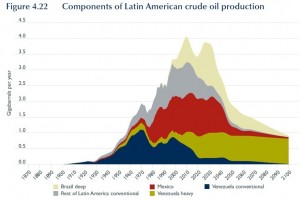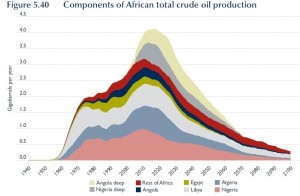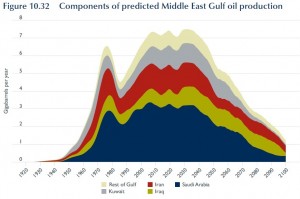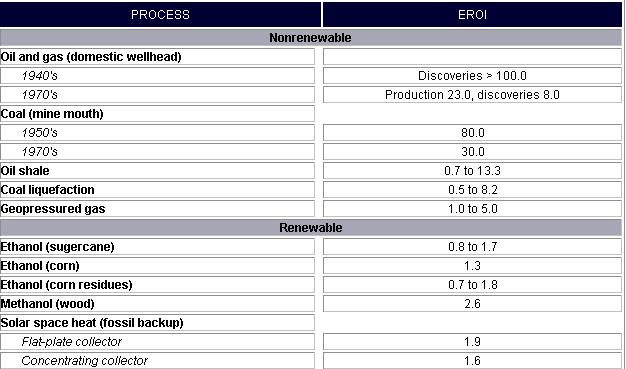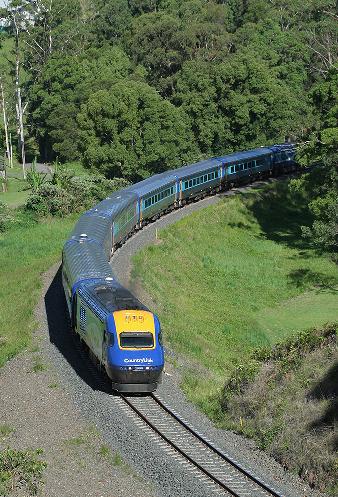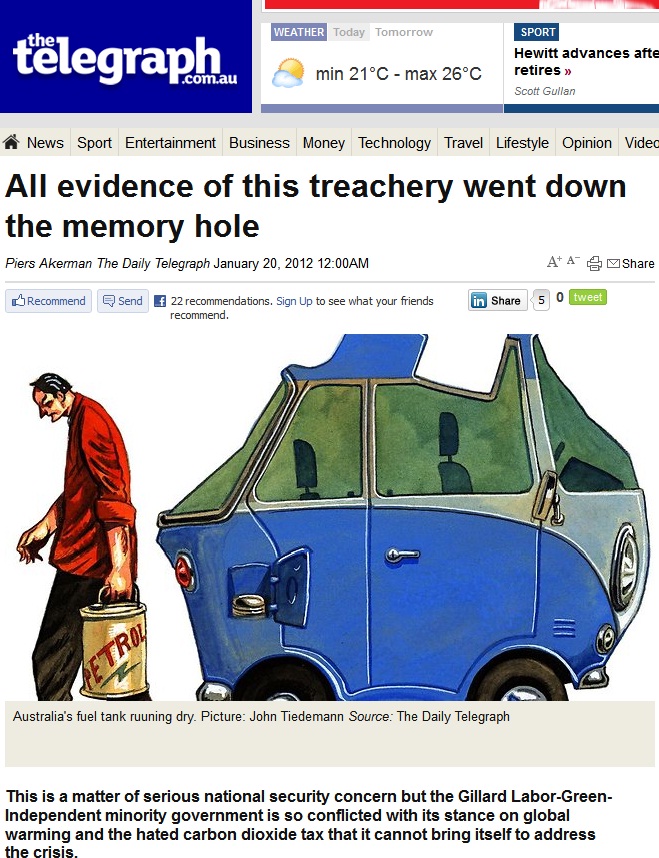 http://www.dailytelegraph.com.au/news/opinion/all-evidence-of-this-treachery-went-down-the-memory-hole/story-e6frezz0-1226248729853
http://www.dailytelegraph.com.au/news/opinion/all-evidence-of-this-treachery-went-down-the-memory-hole/story-e6frezz0-1226248729853
The Australian Daily Telegraph published today a story on a leaked government report (BITRE 117) which (optimistically) calculated peak oil around 2017, followed by permanent decline
The report can be downloaded here:
http://ianmcpherson.com/blog/audio/Australian_Govt_Oil_supply_trends.pdf
Thanks to the watchful eye of ASPO Australia:
The all important graphs are extracted here:
The global peak
Eurasia
Europe
Latin America
Africa
Questions to be answered by the Federal Government
(1) Why was no reference to this report 117 made in the draft of the Energy White Paper (EWP) which was released shortly before X’mas 2011?
Link to the EWP:
(2) Why did the EWP not compare BITRE 117 with the decline rate analysis of the International Energy Agency’s World Energy Outlook 2008 and following WEOs?
http://www.iea.org/weo/2008.asp
And why was the peak oil result not fine tuned by using Chris Skrebowski’s oil megaprojects database in which new oil field projects are added on top of decline curves?
http://en.wikipedia.org/wiki/Oil_megaprojects
Next oil crunch 2012
http://peakoil.com/forums/post1018032.html
(3) Why was the Parliament not properly informed about the progress of work on the 117 report which was known in early 2009 as research project R22?
Here is the list of the BITRE research projects as of January 2009
http://www.aph.gov.au/senate/committee/rrat_ctte/estimates/add_0809/infra/tabled_docs/td03.pdf
This is the Hansard of a Senate hearing (24/2/2009) in which BITRE research projects were discussed (starting at page 114)
http://www.aph.gov.au/hansard/senate/commttee/S11638.pdf
(4) Why was BITRE’s research work not included in a slide show presented by the Executive Director of the BITRE at an ITLS seminar of the University of Sydney, 6 months after work on the report 117 was concluded?
Transport and the carbon pollution reduction scheme
http://sydney.edu.au/business/__data/assets/pdf_file/0003/39873/phil_potterton_presentation.pdf
in this series:
http://sydney.edu.au/business/itls/research/past_seminars/2009
(5) BITRE’s history of writing peak oil related documents started with this paper in February 2005:
Working paper 61: Is the world running out of oil? A review of the debate
http://www.btre.gov.au/info.aspx?ResourceId=96&NodeId=16
Why was that work discontinued by not publishing report 117? As some parts of 117 do not seem to have been completed who ordered work on this report be stopped?
(6) As the report 117 came to a calculated 2017 peak and given that the government must have known (or reasonably expected to have known) the Hirsch report of the US Department of Energy
http://www.netl.doe.gov/energy-analyses/pubs/Oil_Peaking_NETL.pdf
which came to the conclusion that 10-20 years are needed to prepare for peak oil, i.e 1997 – 2007 as start year, why was no action taken in 2009, 8 years before the peak?
(7) In the EWP, why was the warning of the IEA’s Chief Economist Fatih Birol in ABC TV’s oil crunch show in April 2011 ignored in which he said that conventional oil production has already peaked in 2006?
http://www.abc.net.au/catalyst/stories/3201781.htm
and that governments should have started to get away from oil already 10 years ago, that is in 2000?
(8) Why did the oil vulnerability assessment of ACIL Tasman and the National Energy Security Assessment (NESA) not deal with BITRE 117 and peak oil in general?
Link to oil vulnerability assessment:
Link to NESA
(9) There is now another BITRE report 117 “Aircraft movements through capital city airports 2029-30”.
http://www.bitre.gov.au/publications/55/Files/Report%20117.pdf
Of course such a report makes no sense if peak oil is in 2017. So was this report used to cover up the original report 117 on peak oil?
Problems with coal-to-liquids
Piers proposes coal to liquids (CTL) as a solution to replace declining oil production. Unfortunately, CO2 emissions are much higher for fuels from CTL as shown in this table:
 http://docs.nrdc.org/energy/files/ene_10070101a.pdf
http://docs.nrdc.org/energy/files/ene_10070101a.pdf
Whether carbon capture and sequestration makes fuels commercially viable is more than doubtful.
NASA climatologist James Hansen has calculated that we have to reduce CO2 concentration in the atmosphere to 350 ppm.
Target atmospheric CO2: Where should humanity aim?
Paleoclimate data show that climate sensitivity is ~3°C for doubled CO2, including only fast feedback processes. Equilibrium sensitivity, including slower surface albedo feedbacks, is ~6°C for doubled CO2 for the range of climate states between glacial conditions and ice-free Antarctica. Decreasing CO2 was the main cause of a cooling trend that began 50 million years ago, the planet being nearly ice-free until CO2 fell to 450±100 ppm; barring prompt policy changes, that critical level will be passed, in the opposite direction, within decades. If humanity wishes to preserve a planet similar to that on which civilization developed and to which life on Earth is adapted, paleoclimate evidence and ongoing climate change suggest that CO2 will need to be reduced from its current 385 ppm to at most 350 ppm, but likely less that. The largest uncertainty in the target arises from possible changes of non-CO2 forcings. An initial 350 ppm CO2 target may be achievable by phasing out coal use except where CO2 is captured and adopting agricultural and forestry practices that sequester carbon. If the present overshoot of this target CO2 is not brief, there is a possibility of seeding irreversible catastrophic effects.
http://pubs.giss.nasa.gov/abs/ha00410c.html
8/3/2010
NASA climatologist James Hansen at Sydney Uni: “Australia doesn’t agree now that they got to stop their coal, but they are going to agree. I can guarantee you that within a decade or so because the climate change will become so strongly apparent that’s going to become imperative”
http://www.usyd.edu.au/sydney_ideas/lectures/2010/professor_james_hansen.shtml
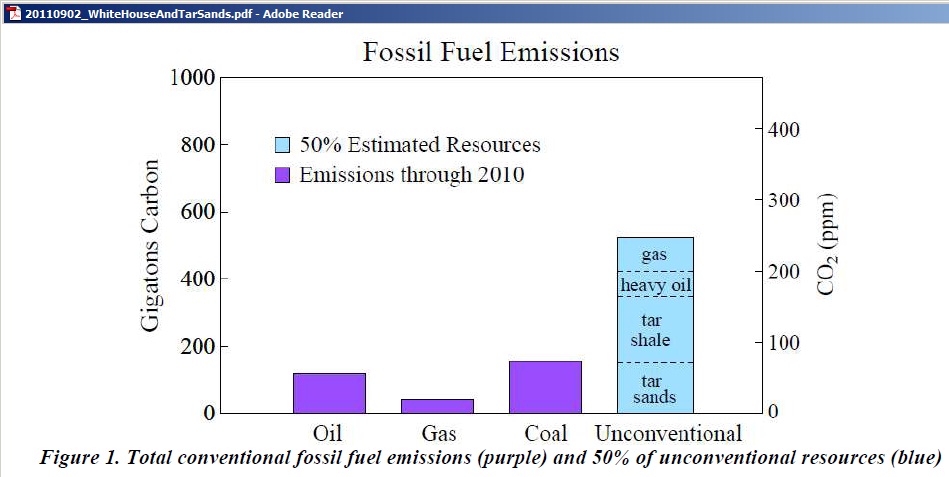 http://www.columbia.edu/~jeh1/mailings/2011/20110902_WhiteHouseAndTarSands.pdf
http://www.columbia.edu/~jeh1/mailings/2011/20110902_WhiteHouseAndTarSands.pdf
Incidentally, the peak oil scenario is hidden in the International Energy Agency’s 450 ppm scenario in the WEO 2010
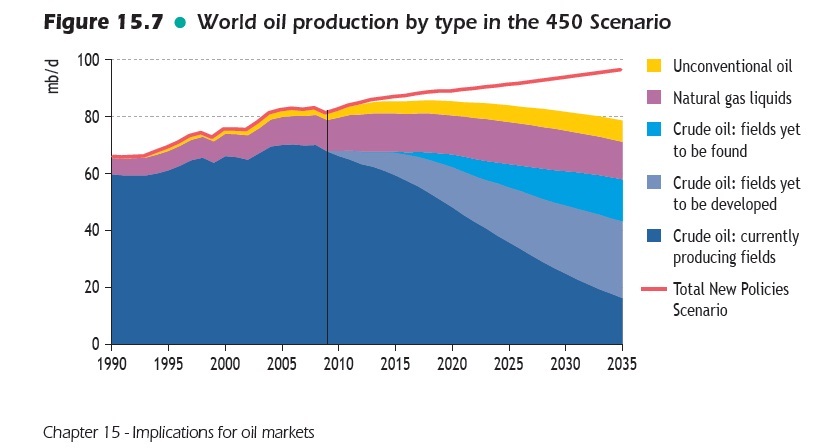 http://www.iea.org/weo/2010.asp
http://www.iea.org/weo/2010.asp
Energy returned on energy invested
From the above table we can see that coal-to-liquids has a much lower EROI than oil. This is what a study came up with:
Economic feasibility of coal-to-liquids development in Alaska’s interior
Thus, an estimate of energy used per ton (excluding construction and transportation) is approximately 10,818,336 BTUs/ton. Dividing the energy content of F‐T liquids per ton by this amount yields an approximate EROI of 3.95. This is almost exactly the 4.0 EROI figure for coal liquefaction reported by Wilshire et al. (2008), and so is probably a reasonable estimate.
An average EROI for crude oil currently stands at about 20:1. Thus, using CTL liquids rather than crude is far more inefficient, implying a faster drawdown of scarce energy supplies relative to what we can achieve by greatly improving the energy efficiency of transport, power production, and heating and thereby extending the life of crude oil supplies until we can develop long term renewable solutions. One such solution –hydropower provided by the Susitna dam – is the kind of alternative that should receive careful consideration as an alternative use of public funds for energy infrastructure.
http://www.sustainable-economy.org/main/news/1
The above EROI for CTL is barely above the minimum for a sustainable society to survive.
Our educated guess is that the minimum EROI for an oil-based fuel that will deliver a given service (i.e. miles driven, house heated) to the consumer will be something more than 3:1 when all of the additional energy required to deliver and use that fuel are properly accounted for.
http://energybulletin.net/node/52341
One alternative transport fuel is natural gas (as CNG for short distance and LNG for long-distance), but:
11/10/2011
Australia’s natural gas squandered in LNG exports
http://crudeoilpeak.info/australias-natural-gas-squandered-in-lng-exports
The Telegraph’s revelation comes as Transport Minister Albanese announces that yet more funds are spent on highway duplication:
Pacific Highway
CONSTRUCTION work will start in early 2013 to duplicate the stretch of the Pacific Highway at Urunga that was the scene of a double fatality this month.
http://smh.drive.com.au/roads-and-traffic/work-approved-for-highway-black-spot-20120119-1q8cy.html
Is that the proper response to peak oil? While the rail line between Maitland and Brisbane is still single tracked?
Hard to believe: this is the main railway line between Sydney and Brisbane
This is the solution for trucks:
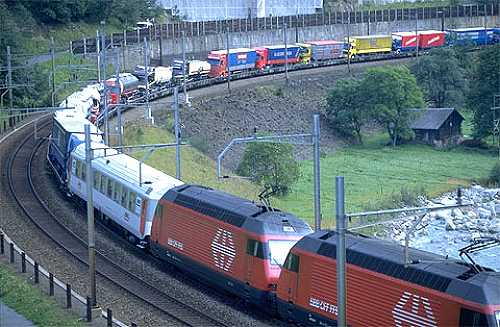 http://www.nationalcorridors.org/df/df12112006b.jpg
http://www.nationalcorridors.org/df/df12112006b.jpg
Drivers of these trucks sleep in the 1st car behind the loco, not at the wheel and then crashing into homes at 5 am
Let’s hope other newpapers pick up the story and bring about the long over-due change in energy and transport policies
Related posts:
19/12/2011
Australian Energy White (Wash) Paper 2011: peak oil denial not yet peaked
http://crudeoilpeak.info/australian-energy-white-wash-paper-2011-peak-oil-denial-not-yet-peaked
20/11/2011
APEC energy intensity reductions: what it means for Australian oil consumption
http://crudeoilpeak.info/apec-energy-intensity-reductions-what-it-means-for-australian-oil-consumption
9/11/2011
System Dynamics peak oil, financial and CO2 debt, ME geopolitics
http://crudeoilpeak.info/system-dynamics-peak-oil-financial-and-co2-debt-me-geopolitics
7/9/2011
NSW budget 2011/12 does not increase oil use productivity
http://crudeoilpeak.info/nsw-budget-2011_12-does-not-increase-oil-use-productivity
31/8/2011
1 billion vehicles in year #7 of peak oil
http://crudeoilpeak.info/1-billion-vehicles-in-year-7-of-peak-oil
8/7/2011
“Yes, Prime Minister”, peak oil 2006 under your watch
http://crudeoilpeak.info/yes-prime-minister-peak-oil-2006-under-your-watch

